HOME > Exhibitions > Past
-
Museum Collection Exhibition
Technique and Expression in Japanese Traditional Art: Decorated Paper - Thursday, May 25th- Sunday, July 2nd, 2017
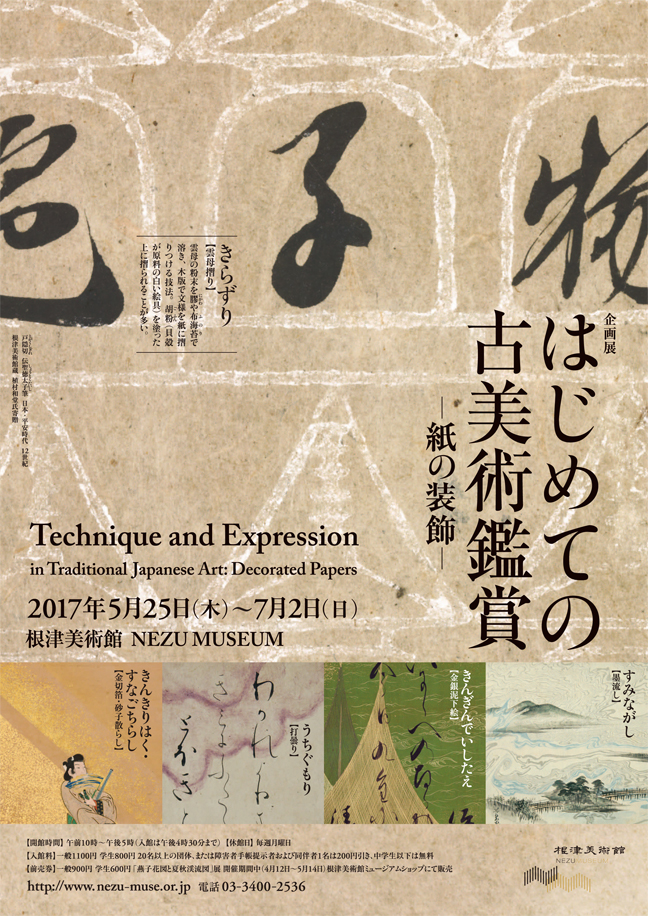

| Closed | Mondays |
|---|---|
| Hours | 10 am to 5 pm(Entrance closes 30 min. before closing) |
| General admission | Adult 1100 yen, Student 800 yen |
| Gallery | 1/2 |
We often hear that traditional Japanese art is rather inaccessible, that people, feeling they could not understand it, give up without trying to explore it. Our response is a series of exhibitions to address key points in understanding Japanese art, in an attempt to overcome that barrier. Many, for example, tend to avoid Japanese calligraphy because they cannot read it. In Technique and Expression in Traditional Japanese Art: Decorated Papers, the second of our introductory series, we focus instead on the paper on which calligraphy is written and their decorations.
The exhibition describes the wide variety of decorative techniques, with colors, gold and silver, and glittering mica, applied to these papers. Focusing on works from our collection, we present examples use in paintings as well as calligraphy.
We hope that this opportunity will enable visitors to experience calligraphy as a more approachable art form and to deepen their appreciation of traditional Japanese art.
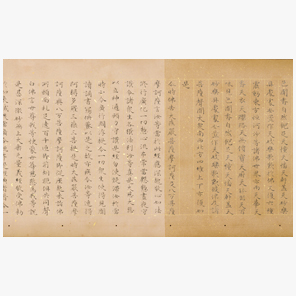

- Muryōgi-kyō sutra
- Japan Heian period, 11th centuryNezu Museum
- Hikizome, Kinkiri haku chirashi, kindei kai (Brushed-on colors, scattered fragments of gold leaf, and gold guidelines)Here colors have been brushed on, using the hikizome technique, to dye the paper; sheets in alternating dark and light brown shades were joined to create the scroll. Finely cut snippets of gold leaf were scattered on it, and the paper was ruled with guidelines drawn in gold pigment. The elegance of both the calligraphy and the decoration define this masterpiece.
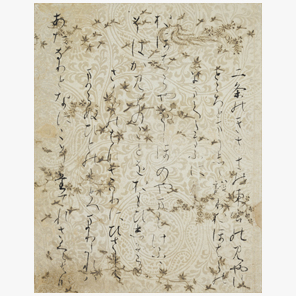
- Ogata-gire, named after Ogata family (Fragment from Poetry Anthology Narihira syū)
- Japan Heian period, 12th centuryNezu Museum
- Gubiki, kirazuri, gindei shitae (Coating with white, mica printing, motifs in silver)Gu refers to a white paint made of gofun (a white pigment made from pulverized seashells) mixed with animal glue or to other paints to which gofun has been added. Coating the entire surface of the paper with it is called gubiki. In kirazuri, mica printing, a mica-glue mixture is applied. This paper has also been decorated with birds and other motifs painted in silver.
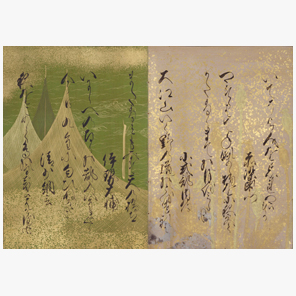
- Poems by A Hundred PoetsBy Prince Toshihito
- Japan Edo period, 17th centuryNezu Museum
- Gubiki, kirihaku, sunago, noge, kingindei shitae (Coating with colors mixed with white, fragments of gold leaf, pulverized gold leaf, strips of gold leaf, motifs painted in gold and silver) The paper, dyed in rich colors, has been lavishly decorated using gold leaf in several forms. The noge or strips of gold leaf are needle thin.
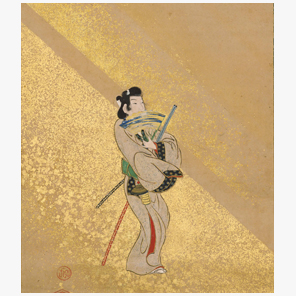
- Courtesan and Two Warriors (detail)
- Japan Edo period, 17th century Nezu Museum
- Kin kirihaku, sunago chirashi (Scattered fragments of gold leaf and pulverized gold leaf)Kirihaku refers to gold leaf cut into small pieces, while in sunago it has been pulverized to a sand-like texture, but the distinction between the two is somewhat vague. This work is an example of decorative paper for calligraphy being likened to the background in a painting.










